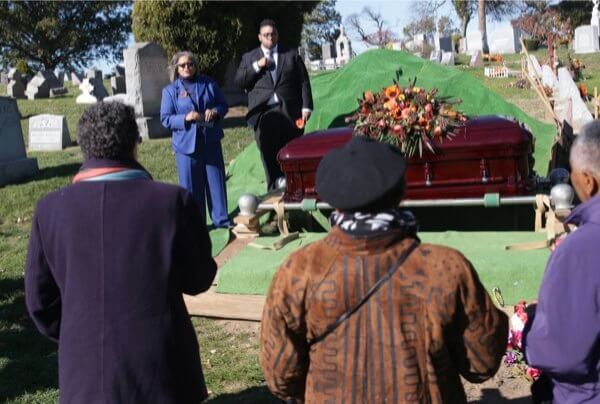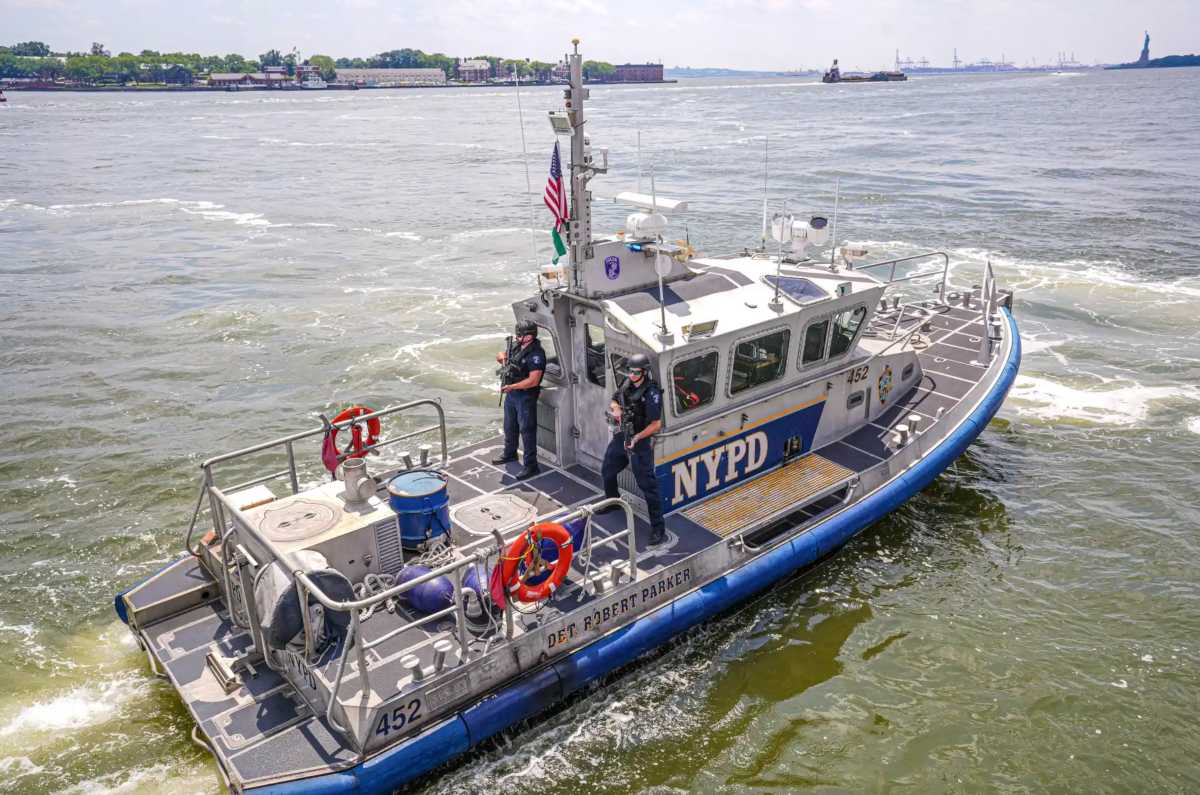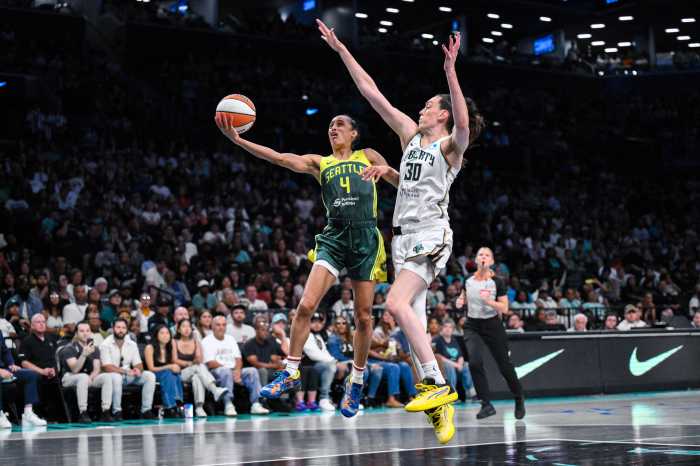By Bill Parry
Five years after a 160-year-old mummy was torn from the earth at a construction site in Elmhurst, the Iron Coffin Lady was given a proper burial Monday by the elders of a Jackson Heights church. A dozen of the faithful from Saint Mark African Methodist Episcopal Church gathered at her grave site at Flushing Cemetery after a weekend celebration that featured historical exhibits and lectures Saturday.
“We wanted to preserve our history and know her history at the same time,” Rev. Kimberly Detherage said. “We had no idea we would keep her from her resting place for so long. Her body was disturbed and poked and prodded and DNA’d. We just wanted to give her a proper send-off.”
Saturday’s featured speaker was archeologist Scott Warnasch, who was working out of the New York City Medical Examiner’s Office identifying 9/11 remains in October 2011 when he was called to the construction site at 90-11 Corona Ave. to investigate a homicide.
“The operator of a backhoe shattered the coffin and dragged the body out,” Warnasch said. “The construction crew headed for the hills and called us and that’s where I came in. She was so well preserved, we discovered lesions on her skin.”
The archeologist knew the woman had died from smallpox and he was intrigued by her casket, which resembled an Egyptian sarcophagus. Warnasch knew it was the type of coffin that was very expensive and used to bury elites the likes of Dolly Madison, Daniel Webster and President Zachary Taylor, not an African-American woman in her 20s or 30s.
Warnash began years of research and discovered from an 1850 census on Newtown that the woman, who was likely named Martha Peterson, did domestic work in the home of the man who produced the special caskets in a Woodside foundry.
“Clearly the Iron Coffin Lady was loved by her community and was given everything she needed for a proper burial despite the fear of smallpox,” Warnasch said. She was buried in the cemetery at the original location of St. Mark, and Rev. Detherage was determined to pay her back for the indignities of her unearthing.
“She reminds us of where we come from and where we are going as a people and a community of faith,” Detherage said. “When people don’t know their own heritage, they are discounted.”
More than a hundred church members listened to lectures by Warnasch; Michael Hutchison Frazier, the historian at the National African American Burial Ground National Monument in Lower Manhattan; and others. Detherage was disappointed that there weren’t any young people in the room.
“Maybe that’s our fault. We should have sent word to the schools instead of just colleges and community organizations,” she said. “That’s why we’re video taping this as well and we’ll have a future school day.”
Detherage is in negotiations with the developers of the site for a proper memorial for the woman as well as the remains of 15 others found at the site. Detherage was appreciative for the experience of this past weekend.
“It was wonderful. It was such an honor to pay respects to her,” she said. “And it was wonderful for our church members, some of whom were skeptical of the endeavor. It helped them to appreciate themselves more.”
Reach reporter Bill Parry by e-mail at bparr
































